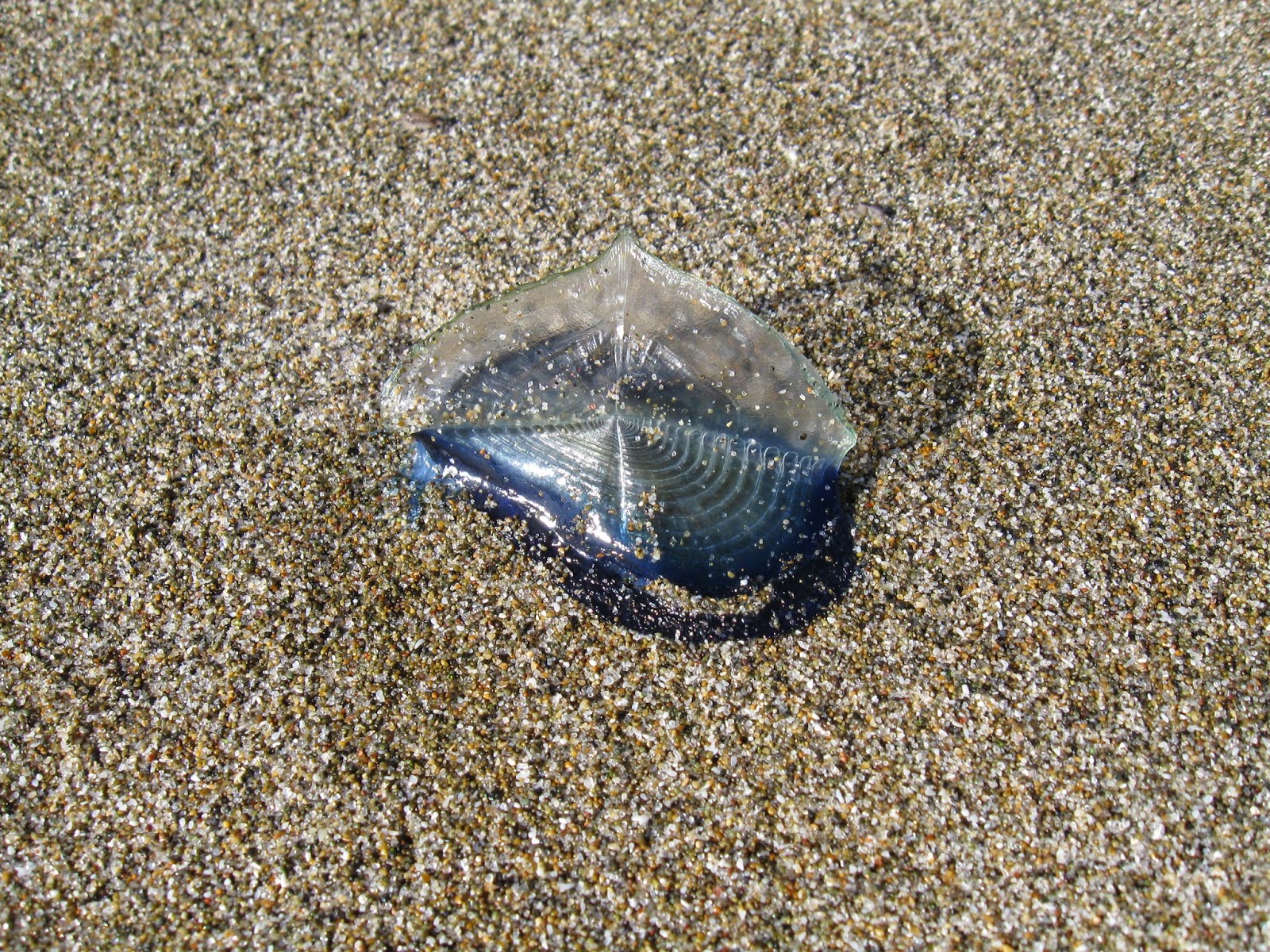In my backyard
Earlier this week, I had the opportunity to go tidepooling with a local high school student. She was job-shadowing me for the day, and I wanted to introduce her to the Oregon intertidal. There is incredible biodiversity to be found in our collective backyard.
Another unusual thing we found in the tidepools: squid eggs. Lots of squid eggs. I have only ever seen squid egg casings on the coast once before, and I was surprised to see some of the intertidal rocks covered in them. The eggs themselves are tiny, but they arranged in sausage-like casings. Maybe 1,000 eggs are inside a single case. The casings are narrower at the bottom, much like the proportions of a baseball bat, and they are attached at the base in clumps. I'd guess about 20 cases are in each clump. In one shot of my camera, I could see hundreds, maybe thousands of clumps - enough squid eggs to hatch an entire new generation. I couldn't decide if the eggs had washed up in the same freak wind event that brought Velella to our shores, or if the squid parents purposefully deposited their offspring in the shallow subtidal. I could see more casings under the water line, plus it was a very low tide when I went out. I hope at least some of the squid babies survive!
The west coast of North America is actually known for its biodiveristy. The California Current flows south in the summers along the coast and leads to upwelling. Water is welled up from great depth, bringing with it a valuable store of nutrients. These nutrients are utilized by all kinds of primary producers, and the added energy input to the food web means high biodiversity at all trophic levels. This is of course an oversimplified explanation of a complex process, but you get what I mean.
 |
| View out to my tidepooling spot (and Cape Arago Lighthouse), seen from Lighthouse Beach |
We drove out to my favorite tide-pooling spot, a rocky channel near the Cape Arago Lighthouse. Getting there is super sketchy. You have to park along Cape Arago Highway, a decently busy, windy two-lane road that leads out to the cape. There's not much shoulder to speak of, so you just pull off onto a sloping patch of gravel. You'll recognize the spot because it's where surfers park their Subarus before heading down to Lighthouse Beach. You follow the surfers' trail through a small patch of woods, onto a pothole-ridden side road lined with impressive ocean-view homes, then ignore the "No trespassing" sign as you trek through an empty lot between two houses. There's a narrow, muddy trail down to the beach, complete with makeshift wooden stairs at the steepest part and a rope tied to a tree that you can hold onto. Once you've finally made your way to the beach, head left across the sand to the best tidepooling spot this side of the Pacific.
Let me show you what we found.
 |
| Velella velella on Lighthouse Beach. This one was about 3 inches across. |
Velella velella is a well-known hydrozoan that lives on the very surface of the ocean. It's colored blue for camouflage and has a sail on top to catch the wind. Velella doesn't swim or direct its own motion in any way; it's just carried wherever the wind blows. Its common name is actually "By-the-wind sailor." Under normal conditions, Velella are only found at sea, but once every couple years (twice that I've seen since 2012), the wind conditions will be just right to carry the little guys onto the coast in droves. We found them all over the beach, the rocky channel, everywhere. Unfortunately for them, the Velella that end up on the beach will quickly dry out and die, but their bodies will provide energy input for the intertidal communities.
 |
| Squid eggs in the rocky intertidal |
As we made our way deeper into the channel, we encountered upwards of 50 species of macroalgae, kelp, barnacles, mussels, sponges, snails, sea slugs, chitons, and sea urchins. The tide was even low enough that we could walk across the channel and overturn boulders on Lighthouse Island. Most animals hang out underneath boulders, where they are more protected, especially at low tide. I'll end this post by showing you a nudibranch, Doris sp., also known as a sea lemon. Nudibranchs are important predators in intertidal and shallow subtidal communities, and each species has very specific prey. Often, the predator nudibranch will match its prey in color or texture, so that it blends in better and is less likely to get eaten itself. This particular nudibranch eats a yellow sponge, so it matches its food perfectly!
 |
| Sea lemon, Doris sp. |
Comments
Post a Comment